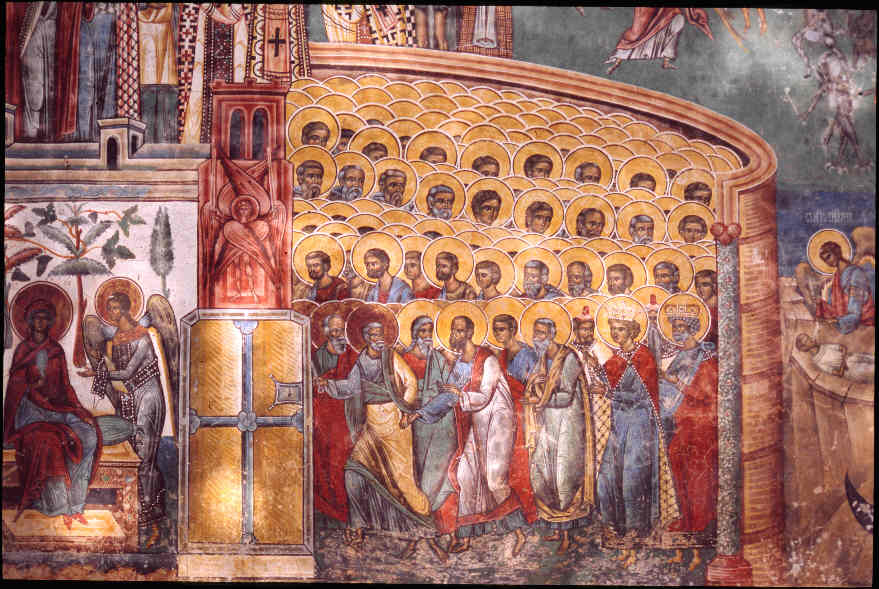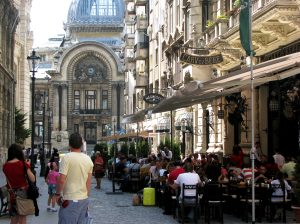
ROMANIA ALWAYS SURPRISING
ITINERARY
1st day Arrival in Romaniaival in Bucharest, the capital of Romania. Meeting with the guide and transfer to Brasov . Surrounded by the peaks of the Southern Carpathians and resplendent with Gothic, Baroque and Renaissance architecture, as well as a wealth of historical attractions, Brasov is one of the most visited places in Romania. Founded by the Teutonic Knights in 1211 in an old Dacian area and settled by the Saxons as one of the seven citadels, Brasov impresses with a separate medieval atmosphere, recently fruitful in numerous films. We are surrounded by legends with vampires and medieval stories. Night in hotel in Brasov
2nd day Treasures around Brasov
Walk in the old center of the city with the Black Church, the Council Square, the Hirche House, the Baroque style buildings from the Austro-Hungarian era. Visit the Black Church – the largest Gothic church between Vienna and Istanbul which has a collection of more Ottoman carpets. Followed by the St Nicolas Church with the first school in Romania. Continuation to Sinaia named “the Pearl of the Carpathians”. Visit to the summer residence of the first royal copy, King Carol I and Queen Elizabeth, Peles Castle, one of the most beautiful palaces in Europe. Beyond the Great Palace, as Queen Mary called Peles Castle, we will also visit the smaller, coquette castle, Pelisor Castle – the summer residence of the second King, Ferdinand of Hohenzollern. Pelisor Castle was personally decorated by Queen Maria, the last romantic queen of Europe, in an original and unique style, combining the Byzantine, Brancovenesc (Romanian architectural style) and Celtic styles. The most famous is The Golden Chamber, decorated with thistle leaves that resemble the emblem of Scotland, the homeland of Queen Mary. Continuation to Bran to visit the famous medieval castle built as a fortress – Dracula Castle – for the citizens of Brasov to defend the city. Prince Vlad used the castle as his headquarters during his forays into Transylvania. For many years it was an interesting museum of medieval art. Surrounded by an aura of mystery and legend and perched on top of a 100m high rock, Bran Castle was built on the site of a Teutonic fortress from 1212 and was first documented by Louis I of Hungary in November 1377, when he granted the Saxons of Kronstadt (Brasov) the privilege of building the citadel. Back to Brasov Folklore dinner with wine tasting in the most famous restaurant in Brasov. Night in hotel in Brasov
3rd day Brasov – Red Lake – Piatra Neamt – Gura Humorului
You travel along the road between Transylvania and Moldova between picturesque villages. Continuation via Red Lake, stop for photography. We go along Lake Bicaz with its imposing dam, to admire the panoramic view. We go on foot to the Bicaz Gorge if we have good weather. We visit the Neamt monastery, the oldest in Romania, from the 14th century – an important cultural center and an example for all Moldovan monasteries. Dinner and night in hotel Gura Humorului
4th day UNESCO Treasures – The painted monasteries of Bucovina
Full day in Bucovina to discover the great treasures offered by this province: the painted monasteries. Departure for the village of Marginea famous for its black ceramic. This ceramic looked at the characteristics of the Neolithic: the shapes and the firing technique and the ornaments. This pottery is indigenous from Dacian traditions and can be found in Moldavia and eastern Transylvania. Romania’s greatest treasures are the painted monasteries of Bukovina. Its walls are decorated with frescoes featuring portraits of saints and prophets, scenes from the life of Christ, images of angels and demons, and heaven and hell. Considered masterpieces of Byzantine art, these churches are unique in Europe. The purpose of the frescoes is to tell the history of the Bible and the lives of the most important Orthodox saints. The composition, the elegant lines and the harmonious colors blend perfectly with the surrounding landscape. The one who is interested in religion, history, art and architecture will be surprised by the construction and the interior and exterior decorations. Let’s start with the Sucevita Monastery built between 1582 and 1584. You can go to the Moldovita Monastery built between 1532 – 1537. One of the most evocative scenes of the Moldovita monastery is the «Council of Constantinopole», a monumental composition with a theme that seems to have been approached only in Moldova (Bukovina). At the Moldovita monastery we can enjoy a tour given by sister Tatiana – a symbol of Orthodox monastic life. Visitors can see a nun or friar banging a long beam with a hammer calling for prayer. The tradition dates back to the times of the Ottoman Empire when the Turks prohibited the ringing of bells. The striking of wood on metal known as “toaca” has replaced the ringing of bells, a tradition also reinforced during the war when the bells became cannons. Visit to the Voronet Monastery (UNESCO) called “The Sistine Chapel of Europe” for its interior and exterior paintings. This monastery offers an abundance of characteristic frescoes of an intense blue known as « Voronet Blue ». This monastery is the most important in Bucovina – and a symbol of the region. Dinner and night in hotel in Gura Humorului
5th day Hura Humorului – Bistrita – Targu Mures – Sighisoara
Departure for Transylvania, via Borgo Pass and Bistrita, an area covered in stories with vampires. In Bram Stoker’s novel, Dracula, a young Englishman, Jonathan Harker visits Bistrita and spends a night in the hotel “The Golden Crown” ( Coroana de Aur) on the eve of St. George’s Day; then he continues his journey to Count Dracula’s Castle. Despite the fact that no establishment of this name existed when the novella was written, a hotel named after it was built for visitors. Arrival in Targu Mures.. We visit the attractions of Targu Mures to the south east of the square: the Palace of Culture, a beautiful building from the early 20th century with an extraordinary glass hall, housing important local museums. Visit the old fortress built by Prince Stephan Bathory in 1492 with medieval military architecture. Visit to the Orthodox Wooden Church of St. Michael – the oldest church in Targu Mures which harmoniously combines Romanian rural traditions with baroque influences.. The Orthodox and the Greek-Catholics had to build a place for prayers. Therefore, two churches were built in the same period, very close together. Departure for Sighisoara, the best preserved medieval citadel in Europe. Night in hotel in Sighisoara
6th day Sighisoara – Biertan – Sibiu
In the morning we discover the best preserved fortress in Europe, Sighisoara. Founded by Transylvanian Saxons in the 12th century, Sighisoara (Schassburg in German) is even now one of the most beautiful and well-preserved medieval cities in Europe. Designated as a UNESCO treasure, this jewel with 9 towers, narrow cobbled streets, bourgeois houses and decorated churches, rivals the streets of old Prague or Vienna for its magical atmosphere. It is also the birthplace of Vlad Dracula, known as Vlad the Impaler, prince of the province of Wallachia from 1456 to 1462. It was he who inspired the fictional creation of Bram Stoker. His house is one of the attractions of the citadel. There are others such as the Hill Church with its 500 year old frescoes, the Clock Tower with its Weapons Museum, the Dominican Monastery with its 13th century Venetian house, known for its sculpted oriental carpets of the 17th centuryAccording to Forbes, this is the most romantic ecotourism area in the world.. Visit to the Glass Icons museum in Sibiel. Typical home-made dinner at the inhabitants, a unique moment to discover local traditions. Night in sthotel in Sibiu
7th day Sibiu and its treasures
Walking tour in the medieval city of Sibiu (Main Square, the Evangelical Church, the Liars’ Bridge, etc) Sibiu – one of the easternmost cities of the Habsburg Empire. During the walk we will admire the most important monuments such as Bruckenthal Palace – visit to the Brukenthal Museum – the first museum in Romania and the oldest in Central and Eastern Europe. It collects more than 15,000 exhibits of great value. Visit to the Evangelical Cathedral, a large monument in Gothic style, The oldest part of the building which is found in a document in 1371 is the construction site. In the afternoon, departure for Hunedoara and visit to Corvino Castle, the largest castle in Central and Eastern Europe and the only entirely preserved Gothic castle in Romania. Gothic, Baroque and Renaissance styles are brought together to create this unique 14th century castle, with high towering walls next to the river with a long entrance bridge to protect it from invaders. There is a legend that tells us that Vlad Dracula was imprisoned in the Castle for 7 years, before he married the owner’s daughter and resumed his reign in Wallachia. There is another legend about the crow that held a gold ring in its beak, and another about the well that the Turkish prisoners dug in 15 years. Return to Sibiu. Night in hotel in Sibiu.
8th day Sibiu – Horezu – Bucharest
In the morning departure for Horezu and visit to the Hurezi monastery considered the most representative Brancovenesc style building. The place of worship, dedicated to Saints Constantin & Helena, was built between 1693 and 1697 under the reign of Constantin Brancoveanu. In 1993 it was included in the UNESCO heritage. Visit to the local ceramic shop. Since last year, UNESCO has placed Horezu ceramics on the list of intangible cultural heritage. Departure along the picturesque Vale dell’Olt. Arrival in Bucharest free afternoon. Night in hotel in Bucharest

9th day Bucharest – departure
Panoramic city, with the most interesting places of Bucharest such as; The Palace of Parliament, known as “The House of the People”, the second building in the world, after the Pentagon, Revolution Square, Opera Square, Victoria Boulevard, the Arch of Triumph. Airport transfer
INCLUDED
OVERNIGHT STAY 8 nights in a double room in 3/4 star hotels Note: single room on request and with additional price
GUIDE English/French/Italian speaking guide (on request) throughout the program
MEALS Breakfast included Note: half board or full board on request with price supplements
LOCAL TRANSPORT By private car or minibus / bus according to the number of participants
INPUTS Entrance fees to all tourist places mentioned in the program, all local taxes
NOT INCLUDED
FLIGHTS International flights are not included
INSURANCE Travel insurance not included
VISA Assistance in obtaining a visa (if necessary) not included
EXTRAS > hotel extras (telephone, internet, minibar, etc) drinks, cafe> photographing and filming at tourist places personal expenses, porterage, tips…
Services included in the price
Services not included in the price
Optional services
Product ID:
| Product type | tour |
| Theme | culture |
| Countries | Romania |
| Accommodation | 8 nights |
| Meal plan | breakfast |
| Guidance | full time |
| Local transport | |
| Physical effort | moderate |
| Group size |
Duration
9 days
Price from
/person/product
The next start dates
This program runs only by request
Ready to make your next journey unforgettable? Dive into our latest travel tips and essential information.